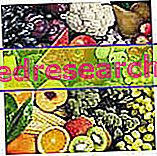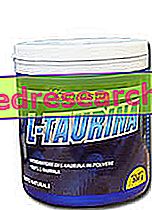"Duck" is a generic term with which numerous Species (and races) belonging to different Genera are grouped, grouped within the Anatidae family (Order: Anseriformes). Ducks can be wild or domestic, migratory or stationary, lake or sea, predominantly carnivorous (fish, molluscs, crustaceans, insects, worms) or herbivores.
As can be deduced, there is a remarkable variability between the various types of duck and this has repercussions on the choice of one or the other Species (or race) based on the predestined use.

Duck meat is avian meat with a color and consistency that varies according to the type of animal, its habits (wild or domestic) and its diet (grass, algae, grain, feed or animals). The wild duck can be considered a game (or black meat, even if red), while the domestic duck, although having consistency and color more similar to chicken or turkey, represents almost a compromise between white meat and black meat .
"Cutting the head to the bull", in the Italian food context, the types of duck most used are (binomial nomenclatures): Anas platyrhynchos (Mallard - wild native but also domestic), Cairina moschata ( Muscovy duck or musk duck - wild allochthonous but also domestic), crosses of both (domestic, some infertile).
Mallard duck
The mallard, with its 3 subspecies ( platyrhynchos, conboschas and diazi ), is the most known and used duck in Italy; it has a very strong sexual dysmorphism and, due to the typical coloring of the male, it is well known as "Capoverde".

Muscovy duck or musk duck
The Muscovy duck is native to central-southern America but was imported to Europe in the 16th century AD. The female is smaller than the male and the adult specimens can reach a length of 60-90cm for a weight of 3-6kg; being larger than the mallard duck, on the farm, the musky duck is often used in breeding with the latter to favor its growth and profitability. Often these crosses between ducks are sterile.
The Muscovy duck is both wild and domestic; while the first has a plumage with more variegated shades (blue, green, bronze), the domestic one is essentially white and black. The musky duck differs "at a glance" from the mallard thanks to the contour of the red eye and thanks to the aphonia (almost total absence of sounds, more evident in the female). It feeds mainly on grass, molluscs and worms, but does not disdain various cereal-based foodstuffs supplied by man.
Duck in the kitchen
Duck is a product strongly rooted in Italian gastronomic culture. Essentially, the meat is cooked by means of the oven (slow or intense cooking - roast), of the spit or of the grill; while the preparations concerning the stove (or mixed with the oven) are: braising, casserole and stewing. For more information, see: Cooking Techniques (or Systems).
Probably the best known recipe is the duck with orange,
See Alice's Orange Duck Video Recipe
but the list of preparations is decidedly long and demanding; probably, it would be possible to write an entire cookbook exclusively on duck cooking. This can be enriched with aromas, wine, other vegetable ingredients (olives, artichokes, new potatoes, etc.), various types of fats (for example lard, bacon or bacon) etc.
| Nutritional composition per 100g of domestic duck - Reference values of the food composition tables - INRAN) | ||||||||||||||||||||||||||||||||||||||||||||||||||||||||||||||||||||||||||||||||||||
 | ||||||||||||||||||||||||||||||||||||||||||||||||||||||||||||||||||||||||||||||||||||
Nutritional values (per 100 g of edible portion)
| ||||||||||||||||||||||||||||||||||||||||||||||||||||||||||||||||||||||||||||||||||||
Not only the muscle is consumed of the duck, but also the offal; the heart and the liver of the duck (paté of fatty liver, sautéed together with other organs and aromas etc.) are well known. Nothing prevents us from consuming its stomach and kidneys too, but these are definitely not commercially edible portions.
NB . It is essential that, in the case of buying a live or whole duck, still to be cleaned, care must be taken during slaughter to: 1. Eliminate the odoriferous gland, 2. Flame the skin to avoid remaining feathers and feathers.
Nutritional characteristics
Duck is a food of animal origin with lean meats and oily skin; like other whole or piece bird products, during cooking, the duck does not require the addition of seasoning fats different from the intrinsic ones; moreover, if you want to avoid taking lipids and cholesterol from your skin, at the end of the preparation it would be necessary to "drain" the cooking juices and eliminate the rest of the integumentary apparatus in the dish. Obviously, through a similar system, the dish will be deprived in good part of its essential organoleptic and taste characteristics, since the sauce accompanying the duck is fundamental to the balance of the typical texture and flavor of the recipe.
Duck meat is rich in high biological value proteins. Fats are present and hypothetically predominantly saturated; even cholesterol, although not mentioned, is still present. There are no sugars or dietary fiber in the duck. The total energy supply is of medium size.
The duck therefore lends itself to any diet, even restrictive (hypocaloric and / or against hypercholesterolemia), as long as one has the foresight to apply the aforementioned with regard to skin fat. In the case of hyperuricemia, it is suggested to avoid the consumption of duck due to the high purine content.
From the saline point of view, the duck is rich in potassium and bioavailable iron (very useful in the case of iron deficiency anemia, typical of fertile and pregnant women); as far as vitamins are concerned, niacin (vit. PP) and vit. TO.



